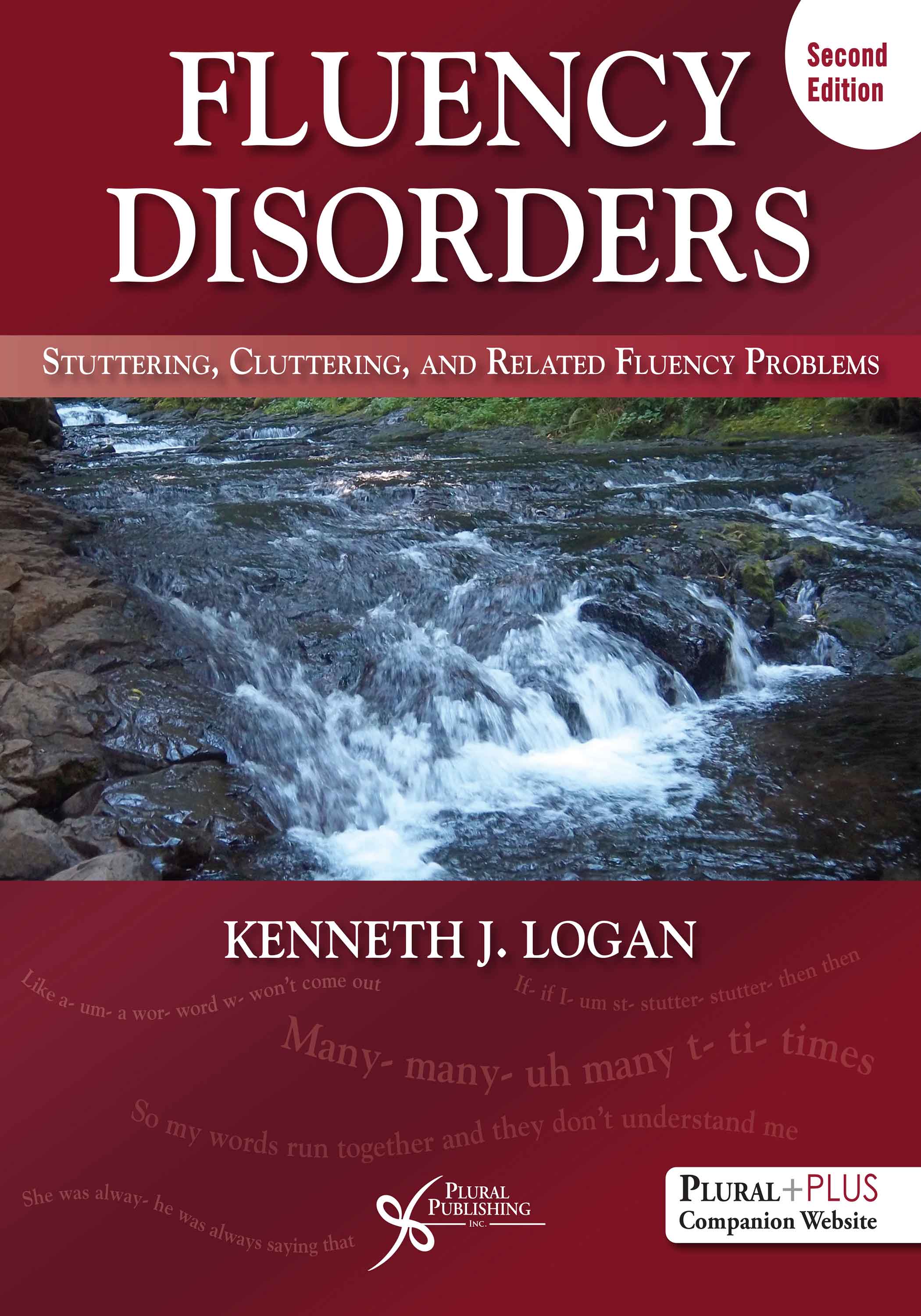
Fluency Disorders: Stuttering, Cluttering, and Related Fluency Problems
Second Edition
Kenneth J. Logan
Details: 609 pages, B&W, Softcover, 8.5"x11"
ISBN13: 978-1-63550-147-6
© 2022 | Available
For Instructors
Purchase
Fluency Disorders: Stuttering, Cluttering, and Related Fluency Problems, Second Edition is a vital resource for graduate courses on stuttering and related disorders of fluency. This thoroughly updated text features accessible and comprehensive coverage of fluency disorders across a range of clinical populations, including those with developmental and acquired stuttering, cluttering, and various types of developmental and acquired language impairment.
Information in the text is aligned with current standards for clinical certification specified by the American Speech-Language-Hearing Association's Council for Clinical Certification (CFCC). Readers will learn practical strategies and methods for how to assess and treat fluency disorders in preschool and school-aged children, teens, and adults.
The text is organized into five key sections: Foundational Concepts, Neurodevelopmental Stuttering, Other Types of Fluency Disorders, Clinical Assessment, and Intervention Approaches. Together, these topics make the comprehensive Fluency Disorders a truly distinguishable text in the field of speech-language pathology.
Key Features
- Content that emphasizes clinical practice as well as client/patient experiences
- Discussion of fluency disorders in the context of communicative functioning and quality of life
- Chapter objectives begin each chapter and highlight key topics
- "Questions to Consider" conclude each chapter to help readers apply their knowledge
- Readers learn to organize information around clinical principles and frameworks
New to the Second Edition
- New larger 8.5" x 11" trim size
- Updated and expanded references throughout
- Reorganized outline and increased coverage of treatment and counseling information
- Expanded use of text boxes to help readers relate chapter concepts to clinical practice
- Access to a PluralPlus companion website with PowerPoint lecture slides for instructors and clinical forms, skill-building activities, video demonstrations, and a list of suggested readings for students
Review
"The purpose of the text is to provide students and speech-language pathologists (SLPs) with a current and thorough text on fluency disorders, including etiology, assessment, and treatment. The primary focus of the book is neurodevelopment stuttering (childhood onset), but the text also incorporates cluttering and acquired fluency disorders. The text includes evidenced-based practice as well as client perspectives and experiences. This is a truly comprehensive text, which is aligned with the standards of the American Speech-Language-Hearing Association's Council for Clinical Certification (CFCC). The companion website provides instructors with helpful examples and assignments, as well as PowerPoint resources.[...] The author is a recognized expert in the field of fluency disorders, with numerous publications. As a person who stutters, he not only provides clinical expertise but can speak from experience about his experiences within therapy.
This 609-page, paperback text includes 18 chapters that are organized in five sections: Foundational Concepts, Neurodevelopmental Stuttering, Other Types of Fluency Disorders, Assessment, and Treatment. Each chapter includes a summary and a section of practical application questions. The first three sections provide comprehensive discussions and examples of different types of fluency disorders. The assessment section thoroughly discusses the assessment process from planning to currently available assessment tools, provided rating scales, and challenges in diagnosing across ages and concomitant diagnoses. Therapy planning is also addressed in depth. The chapters addressing therapy include interventions for preschool, school aged children, adolescents, and adults, with an emphasis on holistic therapy. Helpful tables and examples are provided. Numerous current references are provided for each chapter."
—Suzanne M Welty, MA, EdD, CCC, Biola University, in Doody's Reviews (April 2021)
“This book is aimed at therapists, teachers and students in the field of speech therapy with the aim of providing a comprehensive and current consideration of the area of fluency disorders. The second, revised edition is divided into five main areas: (1) basic concepts, (2) neurogenic developmental stuttering, (3) other fluency disorders, (4) clinical practice diagnostics and (5) clinical practice: therapeutic approaches. In his extensive work names Logan’s concepts, theories, terminologies, he describes studies, gives case studies and has its content with current references, with many figures and tables added.
The ‘Basic Concepts’ section provides an introduction to the topic flow disorders. Logan also considers a possible one impairment of affected persons on social activity and participate and emphasize the importance of the “therapeutic alliance’ between therapists and patients.
In the ‘Neurogenic Developmental Stuttering” section, Logan describes character traits, correlates and consequences as well as epidemiology, development and etiology of stuttering. He gives an overview about relevant studies and discusses, among other things, the start, course and remission as well as quality of life.
‘Other Fluency’ looks at the issues acquired stuttering, rumbling and sluggishness in other clinical populations, such as children with neurodevelopmental disorders or people with genetic syndromes.
The last two areas are dedicated to clinical practice. Logan describes various tests and scales for diagnosing stuttering and rumbling and provides methods of evaluating the diagnostic dates before. It then shows how this information is used in order to formulate suitable therapy recommendations. The role of therapists explains their responsibility in the therapeutic process in more detail. Logan describes how modern management strategies fit into the framework fit from historical stuttering therapy approaches, and shows theories and methods of counseling included in the remit fall from therapists. Finally, he gives direct therapy examples for working with stuttering young children, older children, adolescents and adults based on specific case studies and the presentation of various therapeutic approaches.
This very well researched book offers an in-depth look into the multidimensional facets of speaking fluency and flow disorders. Logan describes essential theories and evidence and compares relevant studies. I liked that he included the topic of participation and quality of life from the start and the emotional components related to the respective topic explained. I found the list of learning objectives to be particularly helpful at the beginning of each chapter, which is a brief overview of the expected content. Summaries at the end, final questions and additional material are available online and encourage thinking, practicing and discussing.
My conclusion: a complex, up-to-date book that is a valuable source for students, teachers and speech therapists who work intensively and want to deal with the topic of fluency disorders.”
—Susanne Cook, in Forum Logopädie (September 2021)
“Logan’s purposes are twofold. First, he stakes out the foundational concepts of fluency disorders, focuses on neurodevelopmental stuttering as opposed to other types of fluency disorders, and then presents detailed clinical intervention. The intervention explanation gives readers clinical details, such as particular strategy applications on making smooth, controlled phonetic transitions…
The overall impression of this textbook is that it is massive and yet highly readable. Logan brings his insights as a person who stutters, as well as the lens and thoroughness of a researcher/clinician to the pages. One example is his specific explanatory mechanisms of why the behavioral modification intervention of time-out might have been effective. This leads to the time-tested efficacy of the Van Riper modification technique “cancellation.” Logan’s explanation is that perhaps time-outs and cancellations are a basic reset of the speech motor system, allowing for dissipation of emotional arousal. His sense of the importance of stuttering as a timing disorder is clear throughout the text.”
–Lisa LaSalle, University of Redlands, from the Journal of Fluency Disorders (2022)
“…this edition is an excellent resource for graduate student clinicians, as well as novice and experienced stuttering researchers alike…
Dr. Logan is well-suited to author a book that pays careful attention to both the science and treatment of stuttering and bridges the gap between the two. He is the rare professional who can move comfortably between the lab, classroom and clinic and appreciates the interdependence of these contexts to a full understanding of stuttering. As important, the insider’s view that Logan holds as a person who stutters adds unique perspective and credibility to his writing – _in the selection and most certainly the interpretation of content. For example, Dr. Logan’s meticulous research in the measurement of observable speech disfluencies across various language contexts, along with his clinical (and I would guess personal) understanding of the relevance of unobservable reactions/responses to stuttering (concealment and compensation strategies) come together beautifully in Chapter 12 (Describing Client Performance). Of the many textbook chapters on the topic of assessment I have read and assigned to students over the years, this one is a standout because of the breadth and depth with which Logan addresses the challenges of observing and measuring stuttering… it’s a must read for any beginning researcher who wants to understand the various ways in which speech disfluency can be observed and measured, and the rationale and methods for doing so. The same is true for more experienced investigators interested in a single, thorough and current reference for measurements and their interpretation.”
–Patricia M. Zebrowski, University of Iowa, from the Journal of Fluency Disorders (2022)
Preface
Acknowledgments
Reviewers
Section I. Foundational Concepts
Chapter 1. An Introduction to Fluency Disorders
Chapter Objectives
Introduction
Speech Fluency Versus Language Fluency
Fluency as an Integral Component of Social and Communicative Functioning
Fluency in the Context of Speech-Language Pathology
Speech-Language Pathology as a Profession
Developing a Framework for Clinical Practice
Fluency in the Context of Service Delivery Domains
Fluency in the Context of Professional Practice
Viewing Fluency as a Component of an Individual’s Health Functioning
Functioning, Performance, and Capacity
Activities and Activity Limitations
Participation and Participation Restrictions
Impairment and Disability
Environmental and Personal Factors
Facilitators and Barriers
Fluency Disorders: A First Look
The Concept of Disorder
Stuttered Speech
Cluttered Speech
Providing Clinical Services to People Who Have Fluency Concerns
The Rewards of Being a Fluency Clinician
Developing the Necessary Knowledge
Developing the Necessary Skills
Developing Competencies for Interprofessional Practice
Engaging in Evidence-Based Practice
Establishing Effective and Valued Working Relationships With Clients
Summary
Questions to Consider
Chapter 2. Conceptualizing Fluency
Chapter Objectives
Context and Historical Perspective
Fluency: A Multidimensional Construct
The Dimensions of Fluency
Fluency Dimensions: Speech Continuity
Fluency Dimensions: Rate and Rhythm
Fluency Dimensions: Effort and Naturalness
Fluency Dimensions: Talkativeness
Fluency Dimensions: Stability
Organizing Fluency Dimensions Into a Clinical Model of Fluency
Fluency in the Content of a Speech Production Model
Modeling the Speech Production Process
Conceptualizing a Message
Transforming a Preverbal Concept Into a Corresponding Linguistic Form
Transforming Linguistic Representations to Articulatory Movements
Summary
Questions to Consider
Chapter 3. Conceptualizing Disfluency
Chapter Objectives
Defining Disfluency
Identifying Disfluent Segments
The Structure of Disfluency
The Moment of Interruption
The Reparandum
The Original Utterance
The Editing Phase
The Repair Phase
Labeling Disfluency
Characteristics of Common Disfluency Types
Revisions
Pauses
Interjections
Repetitions
Prolonging and Blocking
Variations in Disfluency Form
Variations in the Editing Phase
Variations in the Repair Phase
Nested Errors
Repetition of Final Segments in Words and Utterances
Limitations of Disfluency Labeling Systems
Limitation 1: Lack of Standard Terminology
Limitation 2: Lack of Comprehensive Terminology
Limitation 3: Inconsistent Relationship Between Labels and Structure
Limitation 4: Continued Dependence on Listener-Based Judgments
Summary
Questions to Consider
Chapter 4. Speech Fluency in Typical Speakers
Chapter Objectives
Characteristics of Typical Fluency
Quantitative and Qualitative Perspectives on Fluency
Speech Continuity in Typical Speakers
Disfluency Frequency in Children With Typical Fluency
Disfluency Frequency During Adulthood
Types of Disfluency
Context Effects: Where Does Disfluency Occur?
Utterance Locations That Are Prone to Disfluency
Syntactic Forms That Are Prone to Disfluency
Speaking Tasks That Elicit Disfluency
Is It Typical for Young Children to Be Highly Disfluent?
Rate in Typical Speakers
Articulation Rate
Speech Rate
Rhythm in Typical Speakers
Disfluency Duration
Effort in Typical Speakers
Perspectives on Effort
Naturalness in Typical Speakers
Talkativeness in Typical Speakers
Talkativeness in Relation to Conversational Participation
Talkativeness in Relationship to Communicative Functions
Stability of Fluency in Typical Speakers
Summary
Questions to Consider
Section II. Neurodevelopmental Stuttering
Chapter 5. Stuttering: Characteristics and Etiology
Chapter Objectives
Terminology
Historical Perspective
Defining Stuttering
Early Attempts to Define Stuttering
Contemporary Definitions
Characteristics of Stuttered Speech
Continuity Characteristics of Stuttered Speech
Rate and Rhythm Characteristics
Effort and Awareness
Compensation and Concealment Strategies
Performance Variability
Effects of Speaking Task, Setting, and Conversational Partners on Speech Fluency
Effects of Linguistic Complexity on Speech Fluency
Summary
Questions to Consider
Chapter 6. Stuttering: Correlates and Consequences
Chapter Objectives
Historical Perspective
Correlates of Stuttering
Genetic Correlates of Stuttering
Approaches to Researching Genetic Factors
Neuroanatomical Correlates of Stuttering
Gray Matter Volume and Hemispheric Asymmetry
White Matter Integrity
Neurophysiological Correlates
Early Studies of Brain Activation and Hemispheric Dominance for Language
Electroencephalography (EEG) Findings
Neuroimaging Findings
Motor Correlates of Stuttering
Manual Movements
Reaction Time and Speech Initiation
Speech Motor Coordination and Movement Control
Motor Learning
Linguistic and Cognitive Correlates
Syllable, Word, and Utterance Properties That Precipitate Stuttering-Related Disfluency
Effects of Syntactic and Phonologic Complexity
Assessments of Language Functioning in Speakers Who Stutter
Developmental Disorders that Co-Occur with Stuttering
Studies of Phonological Encoding
Cognitive Functions and Stuttering-Related Disfluency
Psychological and Social-Emotional Correlates
Life Experiences of People Who Stutter
Anxiety and Related Disorders
Personality Characteristics
Temperament Characteristics
Emotions and Autonomic Nervous System Functioning
Environmental Correlates
Listener Behavior
Summary
Questions to Consider
Chapter 7. Stuttering: Epidemiology, Development, and Etiology
Chapter Objectives
Epidemiology
Age of Onset
Fluency Characteristics Near the Time of Onset
Incidence and Prevalence
Lifetime and Cumulative Incidence
Prevalence
Stuttering Prevalence in Males Versus Females
The Developmental Course of Stuttering
Persistent Versus Transient Stuttering
Patterns of Recovery From Stuttering During Childhood
Predictors of Recovery From Stuttering
Recovering From Stuttering After Childhood
Age- and Stage-Based Approaches to Describing Persistent Stuttering
Primary Versus Secondary Stuttering
Progressing From Repeating to Prolonging/Blocking as a Primary Symptom
Relationships Between Age and Stuttering Frequency
Relationship Between Age and Stuttering-Related Disability
Age, Disability, and Quality of Life
Attempts to Explain Stuttering: Theories and Models of the Disorder
Early Explanations: Psychological and Learning-Based Explanations
The Move Toward Viewing Stuttering as a Symptom of Speech Production “Breakdown”
Multifactorial Models of Stuttering
Summary
Questions to Consider
Section III. Other Types of Fluency Disorders
Chapter 8. Acquired Stuttering
Chapter Objectives
Introduction and Background
Characteristics of Acquired Stuttering
Terminology and Subtypes
Disfluency Characteristics
Epidemiological Data
Disfluency Profiles
Rate Characteristics
Facilitative Contexts and Response to Treatment
Associated Behaviors and Emotional Reactions
Summary
Questions to Consider
Chapter 9. Cluttering
Chapter Objectives
Background and Historical Perspective
Defining Cluttering
Approaches to Defining Cluttering
The Evolution of Cluttering Definitions
Fluency Characteristics of Cluttered Speech
Speech Continuity in Cluttered Speech
Effort and Naturalness Characteristics of Cluttered Speech
Talkativeness Characteristics of Cluttered Speech
Performance Consistency/Stability in Cluttered Speech
Speech Articulation Characteristics of Speakers Who Clutter
Coarticulatory Characteristics of Cluttered Speech
Speech Sound Accuracy in Cluttered Speech
Syntax and Discourse Characteristics of Cluttered Speech
Epidemiological Characteristics of Cluttering
Incidence and Prevalence of Cluttering
Onset and Developmental Course of Cluttering
Gender and Familial Patterns of Cluttering
Disorders That Co-Occur With Cluttering
Etiology of Cluttering
Early Views on Etiology
Contemporary Views on Etiology
Public and Professional Views Toward Cluttering
Summary
Questions to Consider
Chapter 10 Disfluency Patterns in Other Clinical Populations
Chapter Objectives
Fluency in Children With Specific Language Impairment
Frequency and Types of Disfluency in Children With Language Impairment
Language Development, Language Demands, and Fluency Performance
Disfluency Variability in Children With Language Impairment
Fluency in Individuals With Intellectual Disability
Fluency in Individuals With Genetic Syndromes
Fluency in Individuals With Down Syndrome
Fluency in Individuals With Fragile X Syndrome
Fluency in Individuals With Prader-Willi Syndrome
Fluency in Individuals With Tourette Syndrome
Fluency in Individuals With Neurofibromatosis Type 1
Fluency in Individuals With Autism Spectrum Disorder
Other Cases of Atypical Disfluency
Word-Final Repetition in the Context of Ostensibly Typical Development
Atypical Disfluency in the Context of Other Communication Disorders
Palilalia: Repetition of Utterance Final Words
Summary
Questions to Consider
Section IV. Clinical Practice: Assessing Fluency Disorders
Chapter 11. Assessment Protocols and Data Collection
Chapter Objectives
Assessment Goals and a Framework for Assessment
Assessment Goals
A Framework for Fluency Assessment
Eliciting Background Information: Case Histories and Client Interviews
Administering a Case History Form
Interviewing the Client and/or Caregiver
Eliciting Speech Samples
Clinician-Designed Tasks: Conversation
Clinician-Designed Tasks: Narration
Clinician-Designed Tasks: Oral Reading
Clinician-Designed Tasks: Sentence Production Tasks
Other Sampling Conditions
Norm-Referenced Tests for Assessing Stuttering
The Stuttering Severity Instrument–Fourth Edition (SSI-4)
The Test of Childhood Stuttering (TOCS)
Tests for Assessment of Language Fluency
The Controlled Oral Word Association Test (COWAT)
Tests of Speech-Language Functioning in Adults With Neurological Impairment
Rating Scales and Questionnaires for Assessment of Stuttering and Related Disorders
Rating Scales for Stuttering
Scales for Assessing Temperament, Anxiety, and Self-Concept
Rating Scales for Cluttering
Open-Ended, Written Responses
Designing Assessment Protocols
Summary
Questions to Consider
Chapter 12. Describing Client Performance
Chapter Objectives
Historical Context
Obtaining Rich Descriptions of Client Performance
Describing the Client’s Perspective on Fluency Impairment
General Considerations
Perspectives on Fluency Impairment
Describing Speech Continuity
Measurement Options
Formats for Analyzing Continuity Data
Reporting Summary Statistics
Disfluency Measures Versus Stuttering Measures
Describing Speaking Rate
Articulation Rate
Speech Rate
Rate Deviations
Describing Rhythm
Time-Based Measures of Disfluency Duration
Restart Attempts During Repetition
Evaluating the Rhythmic Structure of Repetitions
Describing Effort
Objective Measures of Effort
Subjective Ratings of Effort
Acoustic and Visual Correlates of Effortful Speech
Describing Naturalness
Describing Compensatory and Concealment Strategies
Motor-Based Compensations for Fluency Impairment
Other Strategies for Circumventing, Postponing, or Concealing Fluency Difficulty
Describing Performance Variability
Describing Emotions, Feelings, Thoughts, and Beliefs
Describing Participation and Participation Restrictions
Verbal Output Within Tasks
Situational Involvement
Analyzing Communicative Flexibility
Summary
Questions to Consider
Chapter 13. Linking Assessment Data to Intervention
Chapter Objectives
Assigning Diagnostic Classifications
Normal Fluency Functioning
Developmental Fluency Disorders and Atypical Fluency Patterns
Acquired Fluency Disorders
Rating Disorder Severity
Formulating and Presenting General Recommendations
Recommending Dismissal
Recommending Reevaluation
Recommending Intervention
Making Referrals
Other Considerations When Making Recommendations
Making Intervention Recommendations for Preschoolers Who Stutter
Making Recommendations When Parents and Children Disagree on the Need for Intervention
Developing Comprehensive Intervention Plans
Working From Assessment Results
Clarifying the Purpose of Intervention
Taking a Collaborative Approach to Goal Development
Developing Goals Within a Comprehensive Framework of Functioning
Designing Intervention Plans That Encompass Multiple Service Delivery Domains
Planning for Incremental Evaluation of Progress
Other Planning Considerations
Summary
Questions to Consider
Section V. Clinical Practice: Intervention Approaches
Chapter 14. The Clinician’s Roles and Responsibilities in Intervention
Chapter Objectives
Background
Clinical Practice and the Code of Ethics
Ethical Principles
Fluency Intervention: Clinician Roles and Responsibilities
Roles That Fluency Clinicians Are Likely to Assume During Intervention
Fluency Intervention: Independent and Evidence-Based Clinical Judgment
Using External Scientific Evidence
Locating Scientific Evidence and Implementing It in Practice
Using Clinician-Generated Data and Clinician Expertise
Incorporating the Perspectives of Clients and Their Caregivers
Clinical Expertise Revisited: Understanding the Intervention Landscape
An Overview of Intervention
Behavioral Treatments
Other Approaches to Treatment
Counseling as an Intervention Component
Prevention as an Intervention Component
Direct Versus Indirect Interventions
Summary
Questions to Consider
Chapter 15. Intervention Principles and Strategies for Helping People Who Stutter
Chapter Objectives
Historical Perspective
A Principle-Based Approach to Improving Communication Functioning
Intervention Principle 1: Develop the Client’s and Others’ Knowledge of Stuttering, Speech Production, and the Treatment Process
Overview and Rationale
Implementation
Intervention Principle 2: Build an Environment That Is Supportive and Accepting of Stuttering
Overview and Rationale
Implementation
Intervention Principle 3: Build a Communication Environment That Facilitates Speech Fluency
Overview and Rationale
Implementation
Intervention Principle 4: Provide Systematic Feedback About Fluency Performance
Overview and Rationale
Implementation
Intervention Principle 5: Help the Client Discover and Build on Existing, Productive Responses to Stuttering
Overview and Rationale
Implementation
Intervention Principle 6: Help the Client Develop Skills That Reduce Stuttering Frequency
Overview and Rationale
Implementation
The Speaker’s Experience of Speech Regulation
Intervention Principle 7: Help the Client Develop Skills That Modify Unproductive Responses to Stuttering
Overview and Rationale
Implementation
Intervention Principle 8: Develop the Client’s Ability to Apply Stuttering Management Skills in Natural Settings
Overview and Rationale
Implementation
Intervention Principle 9: Develop the Client’s Ability to Maintain Stuttering-Related Improvements after Intervention Ends
Overview and Rationale
Implementation
Summary
Questions to Consider
Chapter 16. Counseling People Who Stutter
Chapter Objectives
Historical Perspective and Overview
An Overview of Counseling Approaches
Counseling and the Scope of Practice in Speech-Language Pathology
Counseling in Speech-Language Pathology: Overview
Emotions That May Accompany Stuttering
Emotions That Parents May Experience
Ways of Interacting With Clients During Therapy Activities
Engaging in Active Listening
Using Empathic Highlights
Using Probes and Summaries
Presenting Challenges and Disputations
Application of Counseling Practices in Stuttering Intervention
Targeting Self-Limiting Beliefs and Self-Talk: Research Outcomes
Applying Counseling Practices in the Broader Context of Stuttering Treatment
Summary
Questions to Consider
Chapter 17. Sample Intervention Programs for Children Who Stutter
Chapter Objectives
Introduction
A Recap of Intervention Concepts Discussed Thus Far
Individualized Intervention: Introductory Comments and Preliminary Considerations
Case 1: Preschooler With Mildly Disfluent, but Typical Fluency Performance
Background Information
Summary of Speech-Language Assessment Protocol and Results
Relationship Between Recommendations and Intervention Principles
Measuring Outcomes
Contingency Plans
Case 2: Preschooler With Moderately Severe Stuttering
Background Information
Summary of Speech-Language Assessment Protocol and Results
Relationship Between Recommendations and Intervention Principles
Measuring Outcomes
Contingency Plans
Case 3: Early Elementary Grade Student With Moderate Stuttering
Background Information
Summary of Speech-Language Assessment Protocol and Results
Relationship Between Recommendations and Intervention Principles
Case 4: Intervention With Children Who Have Concomitant Disorders
Summary
Questions to Consider
Chapter 18. Intervention With Older Children, Teens, and Adults
Chapter Objectives
Initial Considerations: Clinical Outcomes Research for Stuttering
A Framework for Organizing Intervention Approaches
Applying Intervention Research to Clinical Practice
Intervention With Older Versus Younger Clients: What Are the Main Differences?
Behavior Modification Approaches to Treating Stuttering
Use of Time-Out as a Primary Intervention Strategy
Speech Motor Approaches for Treating Stuttering
Using Regulated Articulation Rate and Syllable-Timed Speech as Primary Intervention Strategies
Explanatory Mechanisms
Developing the Client’s Ability to Use a Motor-Based Strategy
Examples of Intervention Protocols
Other Strategies That Involve Alteration of Speech Motor Behavior
Speech Motor Strategies in the Context of General Intervention Principles
Structure of a Typical Clinical Session
Feedback and Technology Interventions
The Basics of Delayed Auditory Feedback
The Basics of Frequency Altered Feedback
Explanatory Mechanisms
Intervention Protocols When AAF Is the Primary Intervention Strategy
AAF in the Context of General Intervention Principles
AAF Research Outcomes
Combined/Multiple-Component Interventions
Van Riper’s Stuttering Modification Therapy
A Framework for Designing Combined or Multicomponent Interventions
Evaluating Client Progress and Intervention Outcomes
Intervention for Cluttering
Summary
Questions to Consider
References
Index
Fluency Disorders: Stuttering, Cluttering, and Related Fluency Problems, Second Edition comes with access to supplementary student and instructor materials on a PluralPlus companion website.
STUDENTS:
To access the student materials, you must register on the companion website and log in using the access code printed on the inside front cover of your book.
INSTRUCTORS:
To access the instructor materials, you must contact Plural Publishing, Inc. to be verified as an instructor and receive your access code.
Email: instructormaterials@pluralpublishing.com
Tel: 866-758-7251 (toll free) or 858-492-1555
*Note for students: If you have purchased this textbook used or have rented it, your access code will not work if it was already redeemed by the original buyer of the book. Plural Publishing does not offer replacement access codes for used or rented textbooks.
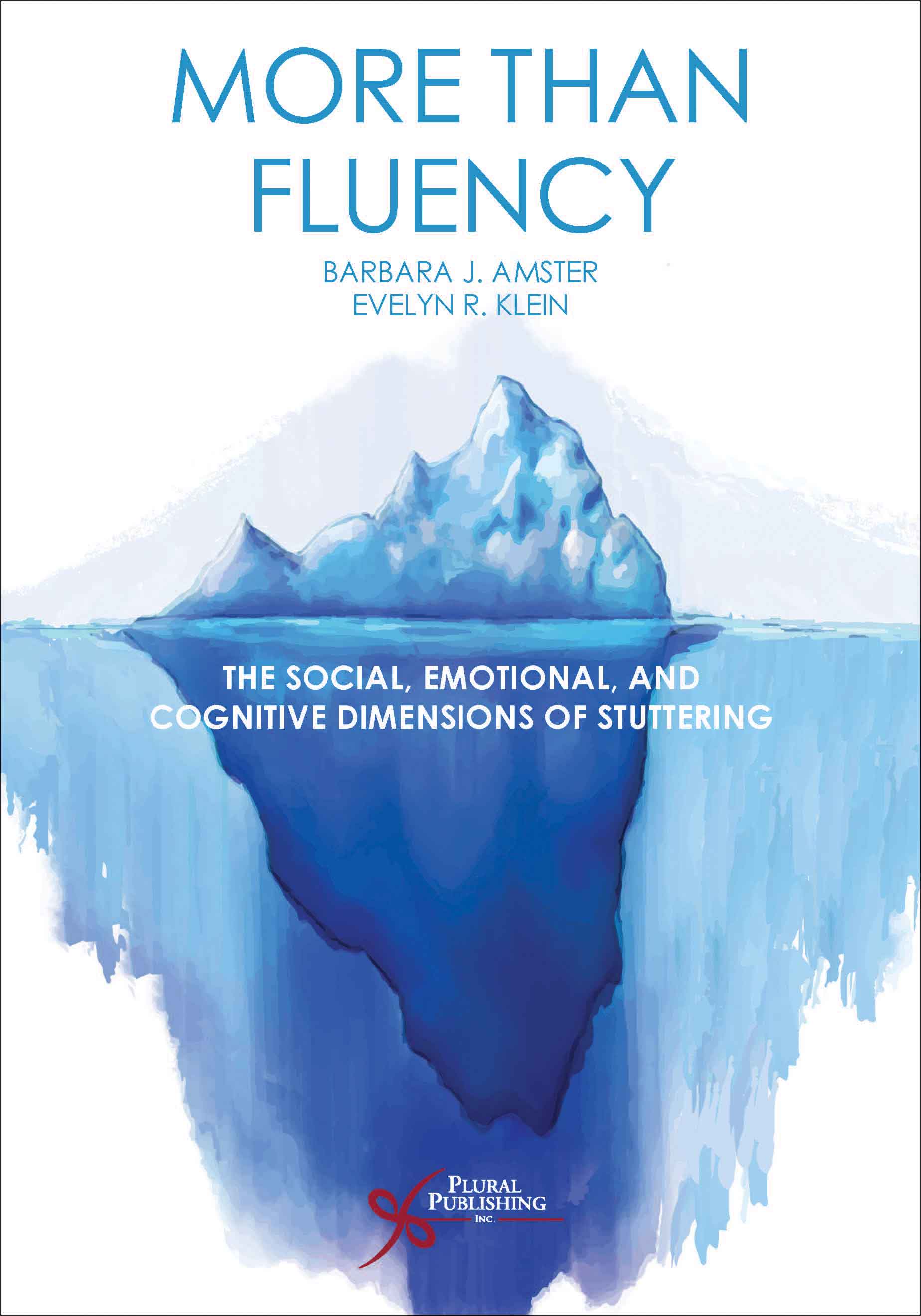
More Than Fluency: The Social, Emotional, and Cognitive Dimensions of Stuttering
First Edition
Barbara J. Amster, Evelyn R. Klein
Details: 242 pages, B&W, Softcover, 7" x 10"
ISBN13: 978-1-59756-995-8
© 2018 | Available

Here's How to Do Stuttering Therapy
First Edition
Gary Rentschler
Details: 175 pages, B&W, Softcover, 8.5" x 11"
ISBN13: 978-1-59756-386-4
© 2012 | Available
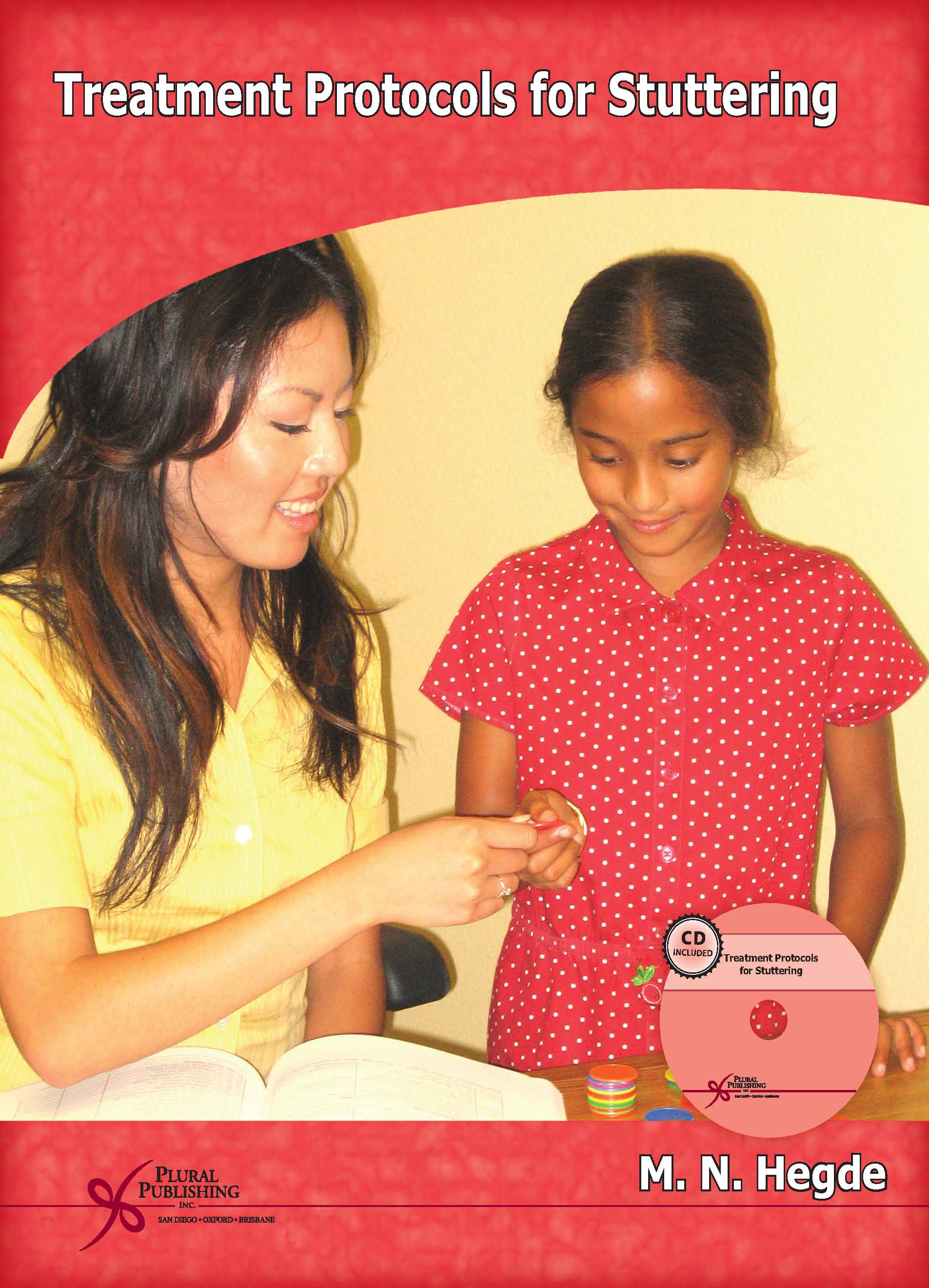
Treatment Protocols for Stuttering
First Edition
M.N. Hegde
Details: 308 pages, B&W, Softcover, 8.5" x 11"
ISBN13: 978-1-59756-050-4
© 2007 | Available
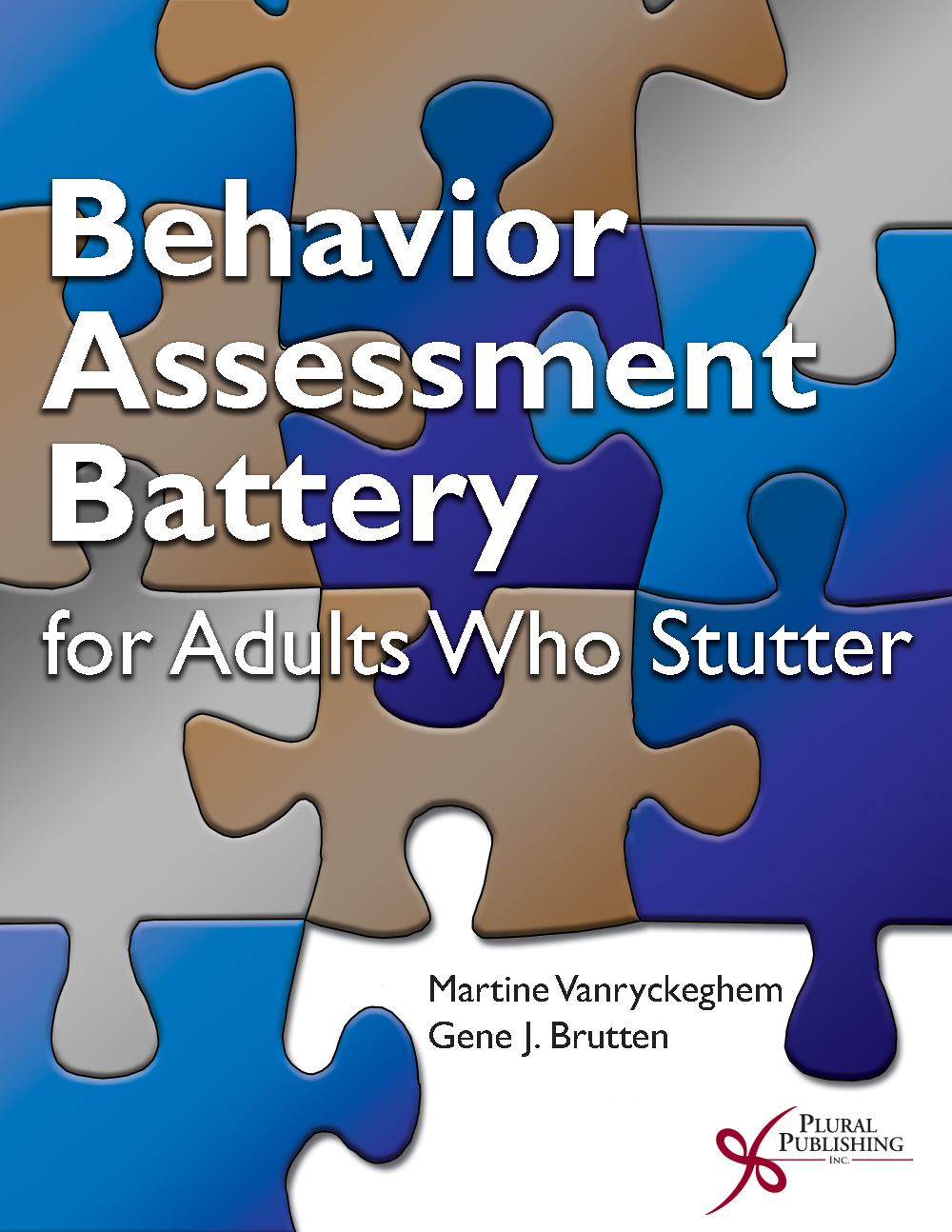
Behavior Assessment Battery for Adults Who Stutter (Online Access)
First Edition
Martine Vanryckeghem, Gene J. Brutten
Details: Online Access
ISBN13: 978-1-59756-901-9
© 2018 | Available
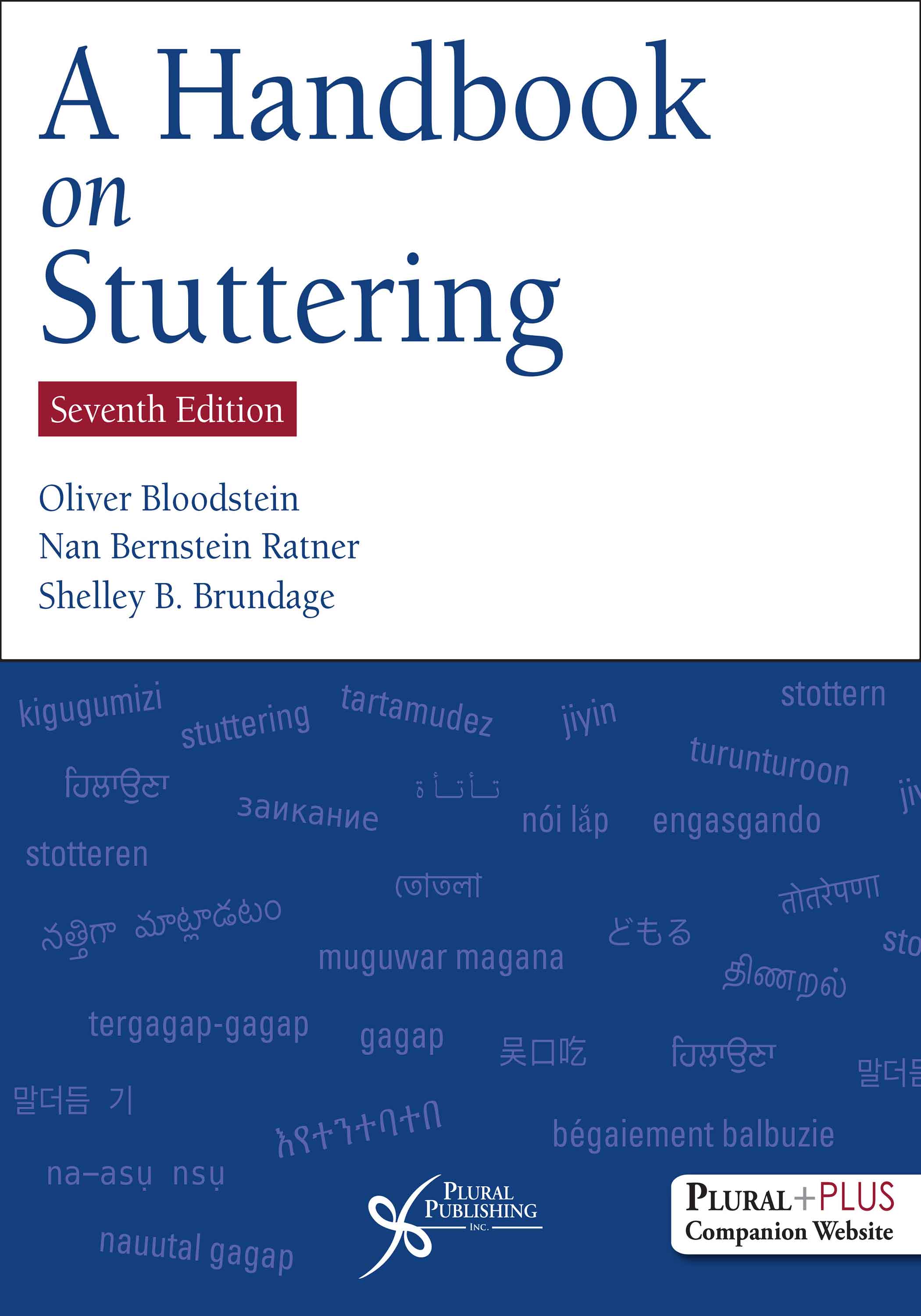
A Handbook on Stuttering
Seventh Edition
Oliver Bloodstein, Nan Bernstein Ratner, Shelley B. Brundage
Details: 581 pages, B&W, Hardcover, 8.5" x 11"
ISBN13: 978-1-63550-317-3
© 2021 | Available
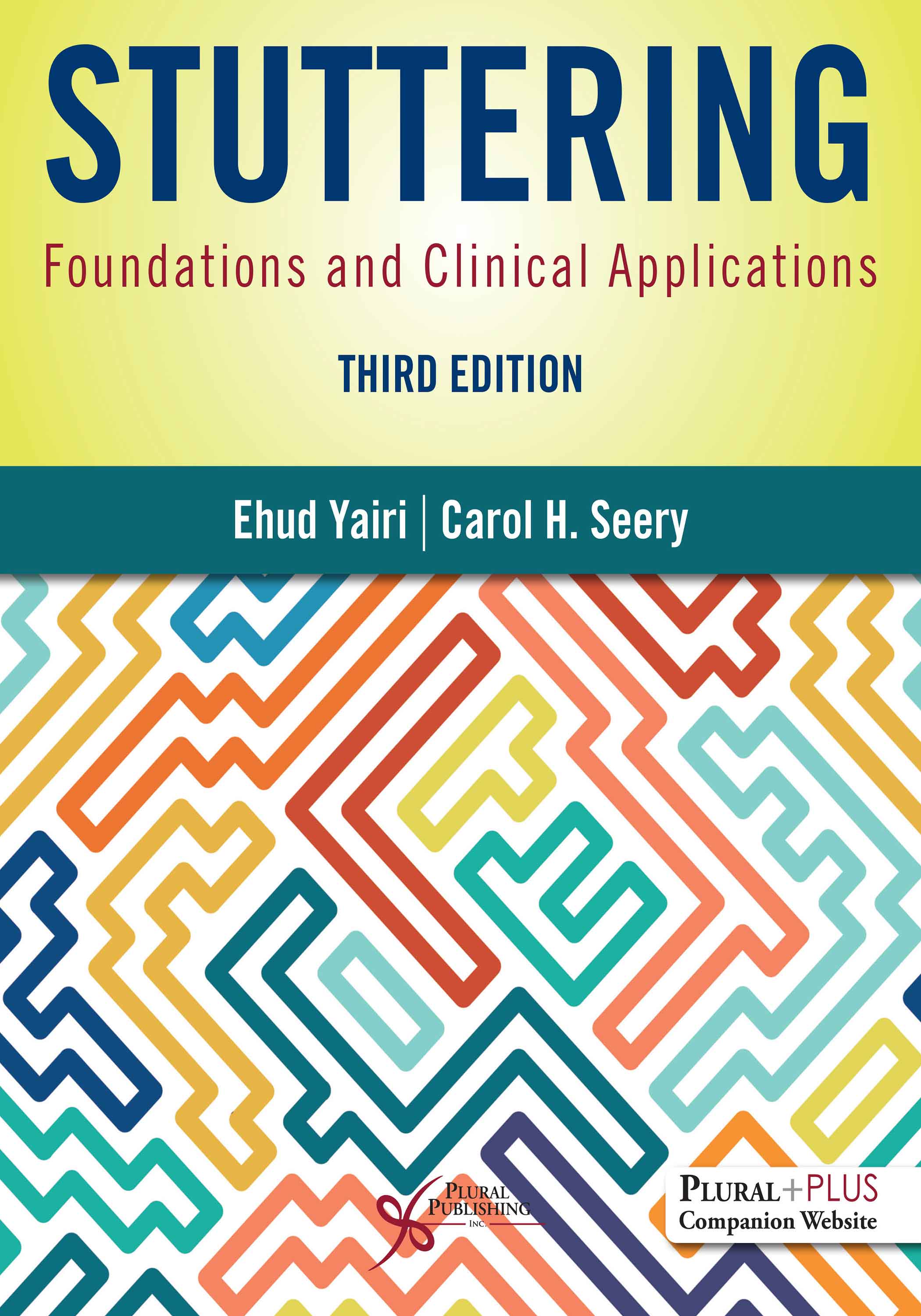
Stuttering: Foundations and Clinical Applications.
Third Edition
Ehud Yairi, Carol H. Seery
Details: 465 pages, B&W, Softcover, 8.5" x 11"
ISBN13: 978-1-63550-355-5
© 2023 | Available
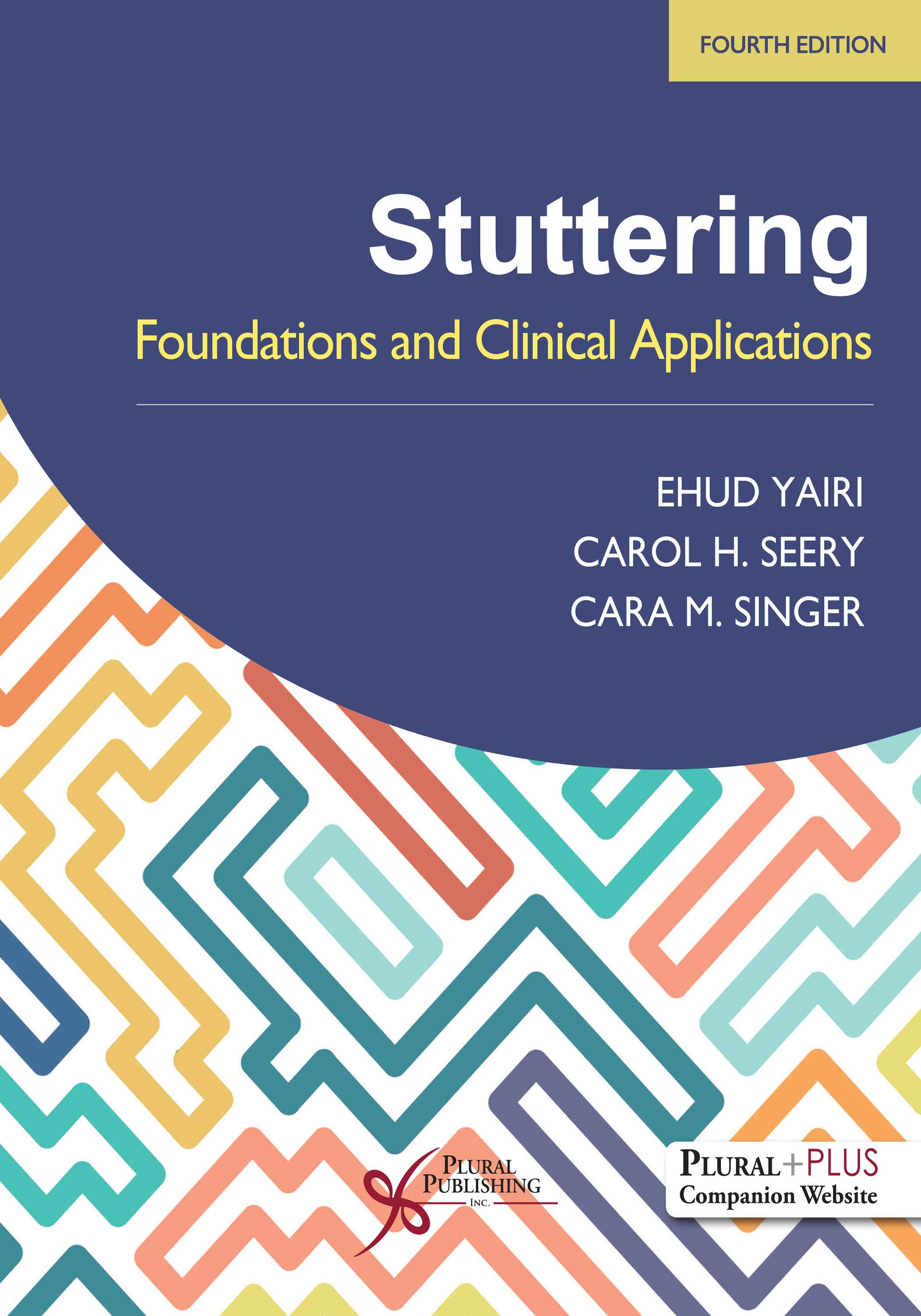
Stuttering: Foundations and Clinical Applications
Fourth Edition
Ehud Yairi, Carol H. Seery, Cara M. Singer
Details: 441 pages, B&W, Softcover, 8.5" x 11"
ISBN13: 978-1-63550-774-4
© 2027 | Available

